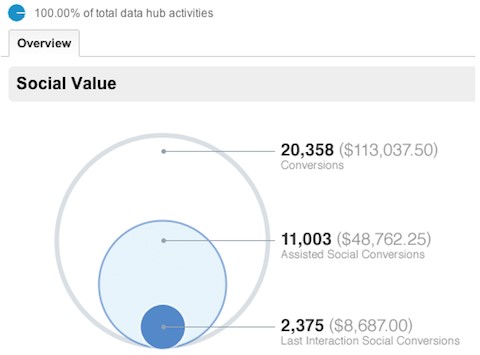Social Media Strategy
Darren Bond from Coast Digital follows up from his recent talk at our Digital Marketing Bootcamp by highlighting how important strategy is when using Social Media for business.
The social media landscape is always changing, and our approach to it as marketers needs to be equally fluid. This blog will delve into how Facebook is changing, how we see social as a marketing channel and how important strategy is in light of these changes.
The Decay of Organic Reach
The downward trend in organic reach has massively effected the way we market on Facebook.
Many companies built a social media presence in the belief that it represented a cheap, easy way to reach their audience. Unfortunately, the dream of cheap communication to a wide audience was short lived. The graph below shows the fate of organic reach (stats from Social@Olgivy)...

Adobe estimate that organic reach has halved again since this data was collected. If you post content now, you’ll reach about 2% of your audience. The cynics among us might suggest that Facebook did this so we’d spend more to reach the audiences we were so happy to have built.
Facebook directly answered this accusation in a post on their website:
“Is organic reach dropping because Facebook is trying to make more money?
No. Our goal is always to provide the best experience for the people that use Facebook.”
Take that for what it’s worth. Whatever the motivation for this change, the reality of our situation was summed up in another post by Facebook:
“Pages that post promotional creative should expect their organic distribution to fall significantly over time.”
Sounds like the trend isn’t going to reverse any time soon.
RIP Organic Reach... What Now?
Our audiences haven’t disappeared, they’re just behind a pay-wall that is letting progressively less content through over time. What needs to change? Ultimately, what we need is a change in approach – and in our attitude toward marketing on social media.
Social media is now a paid channel. It’s that simple - we need to assign media budget to social and create a strategy around this to communicate with our target audiences.
5 Steps to a Social Strategy
1 – Step one is to evaluate our target audience.
Using the ad tools provided by social networks, we can determine the size of our target group. Using Facebook we can target based on personal information such as location and age, but also more insightful factors like family status (married? Children?), hobbies, favourite films... the list goes on.
A network like LinkedIn isn’t suited to this kind of personal targeting. If you want to target based on job role though, you’re in luck.
2 - Once we’ve sized up our target audience, we need to set objectives.
Our social media objectives should be in line with our overall marketing objectives, which in turn will allow us to set SMART goals for our marketing activity. It’s important to remember that while a click from social media might not generate a sale, it is still driving potential customers to your website and acts as part of the conversion journey.
3 – Next we need to develop our strategy.
What are we using social media to do? Be realistic, what are you aiming to achieve and do you have the resources to deliver this?
4 – It’s time to implement our social media activity.
Put an implementation plan in place to ensure you effectively achieve your goals, ensure staff know:
- How to monitor for and react to customer feedback
- How to use the channels effectively and efficiently
- How to use the tools they need
5 – Time to measure how our social strategy is performing
The only way to gauge whether your strategy is successful is to measure your social media activity, consider:
- Breaking down your objectives - did you hit your tangible business targets (eg: sales or revenue), did visits to your site increase?
- ROI = (Revenue – Cost) ÷ Cost
- Conversation Share = Total Mentions ÷ Industry Mentions
- Net Promoter Score = (Positive Mentions – Negative Mentions) ÷ Overall Mentions
We can also assess social value through Google Analytics, which will give us a better overall picture of how social media is contributing to the journeys of users who eventually convert.

Conclusion
Social media can be a valuable and viable part of your marketing strategy. While the days of ‘free’ communication with your target audience may almost be over, the data we can collect – alongside the level of audience targeting we can use – means that social media remains a vital resource for marketers.
Interested in more than just Social Media?
Our next Digital Marketing bootcamp on 8th May 2015 will be focusing on SEO and PPC, click here: http://regions.cim.co.uk/South-East/home/events/?region=South-East to find out more.

